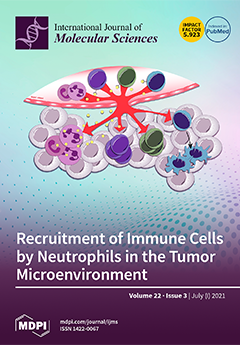Purpose: We developed and phenotyped a pigmented knockout rat model for lecithin retinol acyltransferase (LRAT) using CRISPR/Cas9. The introduced mutation (c.12delA) is based on a patient group harboring a homologous homozygous frameshift mutation in the
LRAT gene (c.12delC), causing a dysfunctional visual (retinoid)
[...] Read more.
Purpose: We developed and phenotyped a pigmented knockout rat model for lecithin retinol acyltransferase (LRAT) using CRISPR/Cas9. The introduced mutation (c.12delA) is based on a patient group harboring a homologous homozygous frameshift mutation in the
LRAT gene (c.12delC), causing a dysfunctional visual (retinoid) cycle. Methods: The introduced mutation was confirmed by DNA and RNA sequencing. The expression of
Lrat was determined on both the RNA and protein level in wildtype and knockout animals using RT-PCR and immunohistochemistry. The retinal structure and function, as well as the visual behavior of the
Lrat−/− and control rats, were characterized using scanning laser ophthalmoscopy (SLO), optical coherence tomography (OCT), electroretinography (ERG) and vision-based behavioral assays. Results: Wildtype animals had high
Lrat mRNA expression in multiple tissues, including the eye and liver. In contrast, hardly any expression was detected in
Lrat−/− animals. LRAT protein was abundantly present in wildtype animals and absent in
Lrat−/− animals.
Lrat−/− animals showed progressively reduced ERG potentials compared to wildtype controls from two weeks of age onwards. Vison-based behavioral assays confirmed reduced vision. Structural abnormalities, such as overall retinal thinning, were observed in
Lrat−/− animals. The retinal thickness in knockout rats was decreased to roughly 80% by four months of age. No functional or structural differences were observed between wildtype and heterozygote animals. Conclusions: Our
Lrat−/− rat is a new animal model for retinal dystrophy, especially for the
LRAT-subtype of early-onset retinal dystrophies. This model has advantages over the existing mouse models and the RCS rat strain and can be used for translational studies of retinal dystrophies.
Full article






